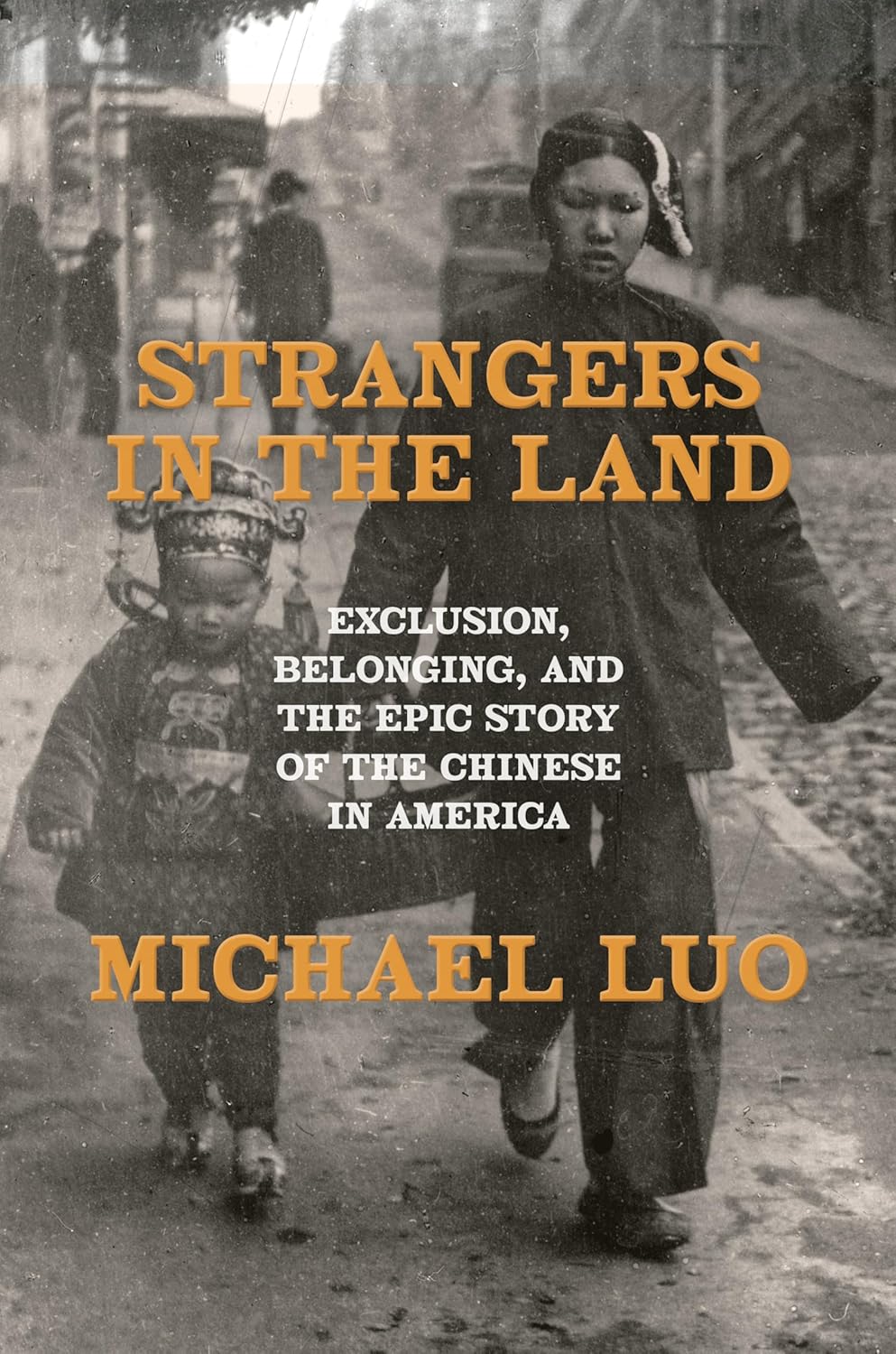Review: ‘Strangers in the Land’ by Michael Luo
As a child growing up in China, I remember referring to Chinese immigrants in America as “Gold Mountain Uncles.” When these relatives returned to visit, they stayed in upscale hotels and dined in grand restaurants. For us back then, America represented a paradise. However, after my family relocated to the United States in 1999, I quickly discovered that reality was far more complex than the idyllic picture we had once imagined.
Journalist and editor Michael Luo opens his book with a striking line reminiscent of the Bible’s opening chapter: “In the beginning, the door was open.” In his narrative, California is portrayed as a land abundant with natural resources, blessed with a pleasant climate and a stunning natural landscape. Like the golden promise of Eden, California’s riches attracted people from around the world, making it a true experiment in a multiracial democracy.

Strangers in the Land: Exclusion, Belonging, and the Epic Story of the Chinese in America
In this sweeping history, Luo recounts the journey of tens of thousands who arrived in mid‑nineteenth‑century America, referring to their new home as “Gold Mountain.” Early on, their arrival was met with openness and curiosity, but as their numbers increased, the West Coast became the stage for acts of racial terror. Luo’s work traces the Chinese experience from those early days through to modern times, offering a detailed look at how they persevered in the face of relentless bigotry and marginalization.
America’s Sinful Racism
Racism that once plagued the eastern states soon spread to the West, where Chinese immigrants encountered hostility as soon as they settled. Luo explains that the challenges faced by Chinese immigrants followed the legacy of racial oppression seen in other communities, emerging alongside the end of Reconstruction, the growth of discriminatory Jim Crow laws, and the mistreatment of Native peoples on the frontier.
The first part of the book methodically details the local violence and lawlessness that plagued Chinese communities on the frontier. This environment of hostility ultimately led to the enactment of the Chinese Exclusion Act of 1882—a historic moment when the United States officially barred an entire ethnic group from its borders. Throughout these pages, Luo documents the vitriolic rhetoric and xenophobic policies that sealed the fate of Chinese immigrants, marking a dark period when the nation closed its doors based solely on race.
Following the passage of the exclusion laws, the treatment of Chinese immigrants worsened. Key chapters in Luo’s account reveal how widespread violence and legal ambiguities were used to force Chinese communities out of American cities—a painful stain on history that remains all too familiar for many.
Even as Chinese laborers built railroads under treacherous conditions, mined precious metals, and toiled in challenging jobs across frontier towns, their contribution went far beyond hard work. They played an essential role in challenging their adopted nation to live up to its highest ideals. As native-born Chinese Americans came of age, they increasingly demanded that the rights guaranteed by the nation’s founding documents be honored. A landmark court decision in 1898, in which a native-born man secured his citizenship through the Fourteenth Amendment, was a turning point that challenged the notion of racial exclusivity.
Racism Today
Despite ongoing efforts to realize America’s founding ideals, racism continues to cast a shadow. Luo recalls an incident from 2016 on a Manhattan street where a remark was made telling him to “go back to China!” Such moments underline a persistent insecurity in the Asian American experience—a reminder that the notion of “belonging” has long been in question.
While Luo’s narrative draws extensively on the painful history of Chinese immigrants, it stops its historical account with the immigration reforms of 1965, leaving readers to draw their own parallels with today’s challenges. Modern debates over birthright citizenship and immigration echo past struggles against exclusion and are a testament to the enduring legacy of these racial policies.
Although overt discrimination has receded legally and violent expulsions have become a memory of the past, many Asian Americans continue to feel a sense of “psychic homelessness.” This modern form of exclusion varies across different groups, reflecting a complex evolution from the historical experiences Luo documents in his book.
Why Not More?
Amidst the harsh critiques of racial injustice, Luo also notes moments of hope—instances where some white Christians reached out to support their Chinese neighbors. These allies taught English, offered legal help, and defended immigrants in public forums. Such gestures stand as a beacon of what more robust, wide-ranging support might look like today.
Historical parallels abound. While Western missionaries once risked their lives overseas, relatively few have spoken out here at home on behalf of Chinese immigrants. Luo’s account invites reflection on whether, in times of renewed tension, communities will have the courage to stand in solidarity with one another.
Ultimately, Strangers in the Land serves as a sober reminder of the ongoing challenge of reconciling American ideals with realities of exclusion and prejudice. It calls on communities—and particularly those guided by faith—to ensure that their personal and public actions truly reflect the principles they profess.

Rockin’ the faith, one verse at a time!
Growing up, the Bible’s stories deeply impacted me. Now, with over 15 years of preaching experience, I blend timeless teachings with modern technology, making them relevant for today’s world.
Bible Hub Verse is my platform to share historical insights and thought-provoking articles, exploring both familiar and uncommon Christian topics. My passion is building a welcoming online space for everyone to learn, grow in their faith, and discover the Bible’s enduring message.
Join the journey!
God bless you.





